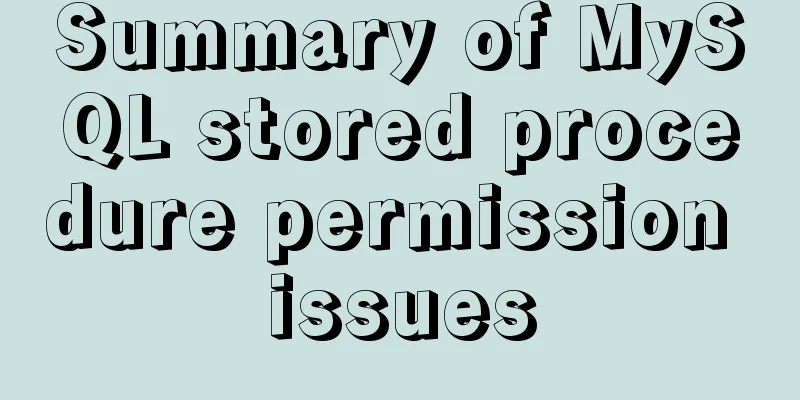How to completely uninstall mysql under CentOS

|
This article records the complete uninstallation of MySQL under CentOS for your reference. The specific contents are as follows 1. Check whether MySQL is installed Method 1: [root@localhost usr]# yum list installed mysql* Loaded plugins: fastestmirror Loading mirror speeds from cached hostfile * base: mirrors.yun-idc.com * extras: mirror.neu.edu.cn * updates: mirrors.yun-idc.com Installed Packages MySQL-client.x86_64 5.6.27-1.el6 installed MySQL-devel.x86_64 5.6.27-1.el6 installed MySQL-server.x86_64 5.6.27-1.el6 installed [root@localhost usr]# Method 2 ( -i : case-insensitive): [root@localhost usr]# rpm -qa | grep -i mysql MySQL-server-5.6.27-1.el6.x86_64 MySQL-client-5.6.27-1.el6.x86_64 MySQL-devel-5.6.27-1.el6.x86_64 [root@localhost usr]# 2. Uninstall MySQL Uninstall 1: [root@localhost usr]# yum remove mysql mysql-server mysql-libs compat-mysql51 [root@localhost usr]# rm -rf /var/lib/mysql [root@localhost usr]# rm /etc/my.cnf If mysql-devel is installed (other add commands are the same), uninstall it as follows: [root@Tony_ts_tian init.d]# yum remove mysql mysql-devel mysql-server mysql-libs compat-mysql51 Note (for example): mysql-5.5.39-1.el6.remi.x86_64 Uninstall 2 {Continue, select one of 1 and 2 (introduction here):}: [root@localhost mysql]# rpm -aq | grep -i mysql MySQL-server-5.6.27-1.el6.x86_64 MySQL-client-5.6.27-1.el6.x86_64 MySQL-devel-5.6.27-1.el6.x86_64 [root@localhost mysql]# rpm -e MySQL-server-5.6.27-1.el6.x86_64 [root@localhost mysql]# rpm -e MySQL-client-5.6.27-1.el6.x86_64 [root@localhost mysql]# rpm -e MySQL-devel-5.6.27-1.el6.x86_64 [root@localhost rc.d]# cd /var/lib/ [root@localhost lib]# rm -rf mysql/ Note: Delete the MySQL database directory (critical), otherwise the password will not be updated (default installation, if you customize the installation path and link path ln -s ... please delete it.) rm -rf /var/lib/mysql Uninstall 3: [root@localhost usr]# whereis mysql mysql: /usr/lib64/mysql [root@localhost usr]# rm -rf /usr/lib64/mysql Note: find / -name mysql Note: Clear all directories, files, and other configurations and settings related to MySQL. If so, delete it. It is also necessary to consider that other software will not be affected. rm -rf /usr/lib/mysql rm -rf /usr/share/mysql Uninstall 4: [root@localhost usr]# rm –rf /usr/my.cnf [root@localhost usr]# rm -rf /root/.mysql_sercret Uninstall 5 (self-starting service): [root@localhost usr]# chkconfig --list | grep -i mysql [root@localhost usr]# chkconfig --del mysqld Delete here to see your own settings: mysql/mysqld The above is the full content of this article. I hope it will be helpful for everyone’s study. I also hope that everyone will support 123WORDPRESS.COM. You may also be interested in:
|
<<: Quickly master how to get started with Vuex state management in Vue3.0
>>: How to set up scheduled tasks in Linux and Windows
Recommend
The perfect solution for MySql version problem sql_mode=only_full_group_by
1. Check sql_mode select @@sql_mode The queried v...
MySql COALESCE function usage code example
COALESCE is a function that refers to each parame...
How to load third-party component libraries on demand in Vue3
Preface Take Element Plus as an example to config...
How to implement an array lazy evaluation library in JavaScript
Table of contents Overview How to achieve it Spec...
Several ways to add timestamps in MySQL tables
Scenario: The data in a table needs to be synchro...
VMware 15.5 version installation Windows_Server_2008_R2 system tutorial diagram
1. Create a new virtual machine from VMware 15.5 ...
Graphical tutorial on Maven installation and configuration under Windows (including localized warehouse configuration)
1. Download Maven Maven official website: http://...
MySQL uses events to complete scheduled tasks
Events can specify the execution of SQL code once...
MySQL infrastructure tutorial: detailed explanation of the query statement execution process
Preface I have always wanted to know how a SQL st...
Six border transition effects implemented by CSS3
Six effectsImplementation Code html <h1>CSS...
Baota Linux panel command list
Table of contents Install Pagoda Management Pagod...
Implementation of formatting partitions and mounting in Centos7
Linux often encounters situations such as adding ...
Mysql uses insert to insert multiple records to add data in batches
If you want to insert 5 records into table1, the ...
Detailed steps for developing Java payment interface for Alipay
Table of contents first step Step 2 Step 3 Step 4...
Detailed explanation of Docker data backup and recovery process
The data backup operation is very easy. Execute t...









